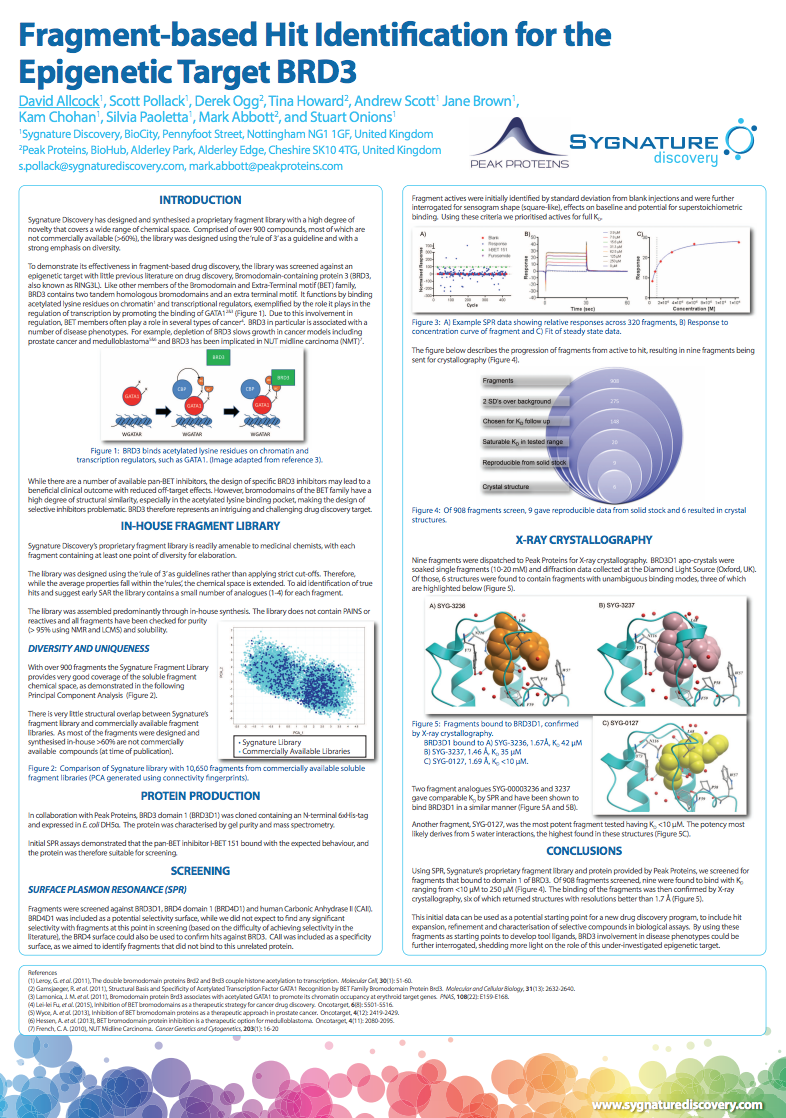Fragment-based Hit Identification for the Epigenetic Target BRD3
Abstract
Sygnature Discovery has designed and synthesised a proprietary fragment library with a high degree of novelty that covers a wide range of chemical space. Comprised of over 900 compounds, most of which are not commercially available (>60%), the library was designed using the ‘rule of 3’ as a guideline and with a strong emphasis on diversity.
To demonstrate its effectiveness in fragment-based drug discovery, the library was screened against an epigenetic target with little previous literature on drug discovery, Bromodomain-containing protein 3 (BRD3, also known as RING3L). Like other members of the Bromodomain and Extra-Terminalmotif (BET) family, BRD3 contains two tandem homologous bromodomains and an extra terminal motif. It functions by binding acetylated lysine residues on chromatin and transcriptional regulators, exemplified by the role it plays in the regulation of transcription by promoting the binding of GATA1 (Figure 1). Due to this involvement in regulation, BET members often play a role in several types of cancer. BRD3, in particular, is associated with a number of disease phenotypes. For example, depletion of BRD3 slows growth in cancer models including prostate cancer and medulloblastoma and BRD3 has been implicated in NUT midline carcinoma (NMT).
While there are a number of available pan-BET inhibitors, the design of specific BRD3 inhibitors may lead to a beneficial clinical outcome with reduced off-target effects. However, bromodomains of the BET family have a high degree of structural similarity, especially in the acetylated lysine binding pocket, making the design of selective inhibitors problematic. BRD3, therefore, represents an intriguing and challenging drug discovery target. While there are a number of available pan-BET inhibitors, the design of specific BRD3 inhibitors may lead to a beneficial clinical outcome with reduced off-target effects. However, bromodomains of the BET family have a high degree of structural similarity, especially in the acetylated lysine binding pocket, making the design of selective inhibitors problematic. BRD3, therefore, represents an intriguing and challenging drug discovery target.

